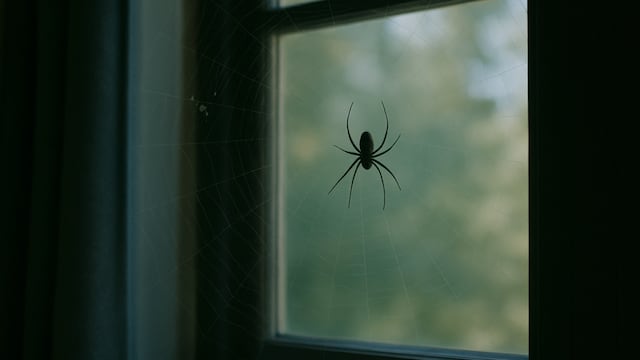You may not like seeing or even thinking about them in your home, but maybe another view should be taken.

Spider season is upon us: Here’s how to reduce their numbers at home “Killing them or cleaning cobwebs won’t do any good”

He climbed up the waterspout. The rain came down and washed him away. Then the sun came out, dried up the rain, and he climbed up... again. Well, he – formally known as Itsy, of course – and his friends are going to be doing it a whole lot more given the time of year.
Why are there more spiders around now?
If you’ve noticed more long-legged visitors scuttling across your living room floor lately, you’re not imagining it. September and October are prime “spider months” across much of North America and Europe, when many species reach maturity and males venture out in search of a mate. That sudden visibility makes it feel as if homes are being overrun, but experts say the reality is more nuanced.
According to Koen Van Keer, a spider specialist with the Belgian Arachnological Association (Arabel), the population indoors actually peaks earlier in the year, when spider eggs hatch in May and June. “At that point you have an explosion of spiders in the house,” he explained to Belgian daily De Morgen. “But they’re so small that you barely notice them. In autumn the males are fully grown and roaming, which makes them harder to miss.”
Why killing spiders backfires
For arachnophobes, that visibility can be a nightmare. Van Keer recalls receiving yearly September emails from one sufferer who booked into a hotel until the mating season had passed. Yet while the urge to swat or vacuum spiders is strong, he warns it’s a mistake. “Killing them or removing webs is just symptom treatment,” he said. “It won’t reduce their numbers. The only way to do that is to limit the prey available indoors.”
That means cutting down on the insects that attract spiders in the first place: keeping windows screened, sealing cracks, and ensuring food waste is stored properly. Old houses with plenty of nooks and gaps – especially in rural settings – tend to see more spiders simply because they also admit more flies, moths and other food sources.
Why we should (maybe) embrace spiders
OK, I don’t mean literally, although Itsy is always portrayed as a very huggable creature. Despite their unsettling presence, domestic spiders pose no threat. None of the species typically found indoors in Europe or the US are dangerous. In fact, they provide a free pest-control service, feeding on mosquitoes, flies and even silverfish.
And while the sight of a spider in the bathtub may trigger panic, it’s usually a case of bad luck. Roaming males often slip into sinks or tubs and can’t climb out, which is why they appear stranded in the morning.
Ultimately, says Van Keer, they are less intruders than part of an indoor ecosystem. “Inside the house, spiders are the only hunters,” he said. “Without them, the smaller pests would have free rein.”
Related stories
Get your game on! Whether you’re into NFL touchdowns, NBA buzzer-beaters, world-class soccer goals, or MLB home runs, our app has it all.
Dive into live coverage, expert insights, breaking news, exclusive videos, and more – plus, stay updated on the latest in current affairs and entertainment. Download now for all-access coverage, right at your fingertips – anytime, anywhere.


Complete your personal details to comment